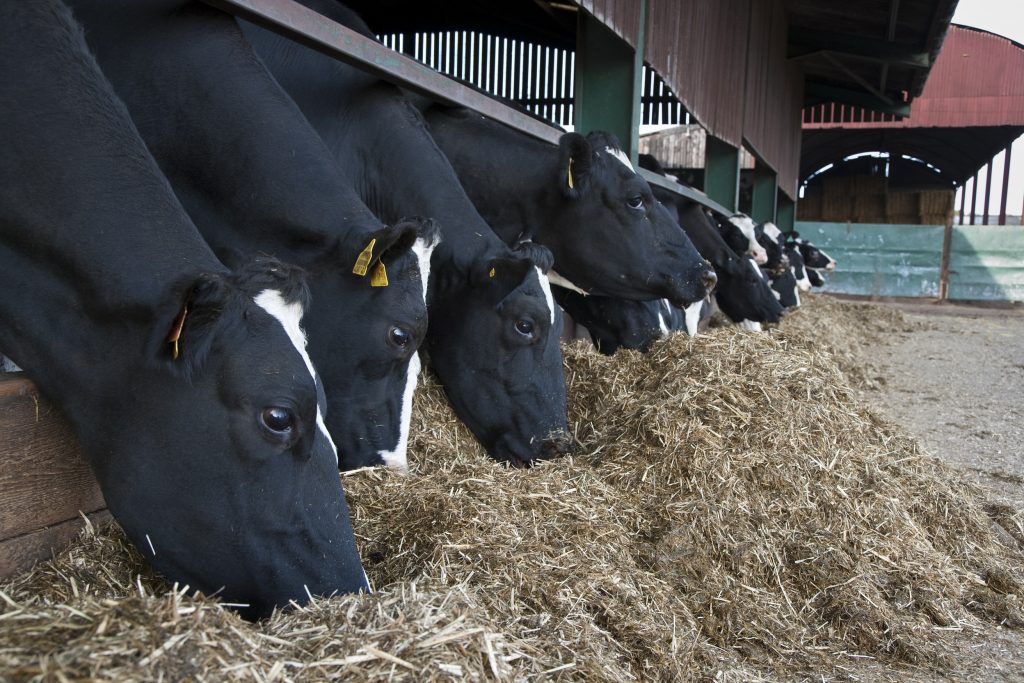Take action to optimise this year’s forage stocks
17th July 2018
By planning ahead and implementing actions now to preserve precious silage stocks, dairy farmers can improve the prospects for the winter.
By planning ahead and implementing actions now to preserve precious silage stocks, dairy farmers can improve the prospects for the winter according to ED&F Man regional manager, Mel Broughton.
“Forage stocks are going to be under-extreme pressure this season,” he comments. “First cuts have been variable and since then we have seen an unprecedented dry spell. This has resulted in a shortage of grazing, so many farmers are having to buffer feed. At the same time second cut tonnages are going to be low meaning that any silage used as a buffer may reduce the winter forage stocks.
“The priority has to be to ensure there will be forage throughout the winter, meaning it is important to preserve stocks in the short term while grass has a chance to recover.”
Although prices are rising due to the dry weather and increased demand, Mr Broughton still believes that straw can provide the foundation of a successful buffer feed to complement grazed grass and also help preserve silage stocks. He says that despite being relatively undigestible and low in protein, straw can be an excellent base for ruminant diets. He points out that it is an excellent source of fibre and careful supplementation can be used to improve intakes and the nutritional value of a buffer feed.
“If we supplement straw with a supply of fermentable energy and a source of effective rumen degradable protein we can encourage a vigorous rumen fermentation, increase the rate of microbial growth in the rumen and so make full use of the digestible fraction of straw.
“Molasses based liquid feeds are an ideal supplement for straw and can improve the palatability of the whole ration. Being very high in sugars, particularly the highly effective six carbon sugars which are more highly rumen fermentable and more effective at improving fibre digestion, molasses based liquids are probably the single most palatable way to improve the nutritional use of straw.
“Where the natural sugars of molasses are complemented with a protein source specially formulated to release nitrogen at a rate compatible with rumen bacterial activity you can optimise the value of straw in higher output systems. Regupro50, for example, is a 60% DM, 12.6ME and 50% protein feed with protein sources incorporated using our patented Regulated Release process. For cows on lower output systems or in later lactation, a straight molasses blend could be sufficient.”
He says that in a buffer feed, 10kg of grass silage can be replaced by straw and a high protein molasses blend and provide similar levels of nutrition. While dry matter intake, protein and energy intakes will be similar, straw and a molasses blend will provide more sugars, helping to drive overall rumen function. A combination of 2.4kg straw and 0.8kg Regupro50 would be a balanced silage extender.
“Assuming that 150 cows are buffer fed for 60 days, feeding straw and a molasses blend in place on 10kg silage/head/day will save 90 tonnes of silage, meaning more is available for the winter,” Mr Broughton explains. “Assuming once housed, that the same 150 cows would ideally be fed 30kg grass silage per day, the 90 tonnes of saved silage would represent enough feed for 20 days which could be important come the end of the winter.”
He says that straw and molasses blends can also be used as a way to extend silage supplies over the winter. He strongly advises assessing silage stocks at the start of the winter and adjusting feed rates to ensure stocks last.
“It will be better to make minor adjustments to silage feed rates at the start of the winter rather than be faced with drastic changes if stocks run low. Using our previous 150 cow example, replacing 10kg of silage with straw and a molasses blend would save 1500kg/day of silage, a 30% saving. This means that every three days you would gain an extra day of silage to extend the feeding season.
“In addition, early indicators are that this year’s silage will benefit from being supplemented by a feed with a high fibre index and straw will be ideal.
“By planning ahead, it will be possible to put nutritional options in place which are good for the cows and that will help make the most of possibly limited silage stocks,” Mr Broughton concludes.

